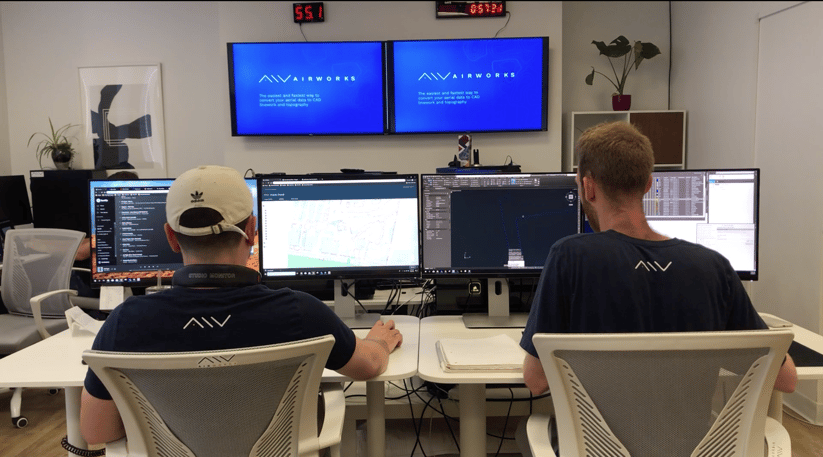Airworks’ proprietary machine learning and aerial mapping technology reduces aerial dataset conversion time and churns outCAD linework, topography in a few hours' time.
Any industry can benefit from moving towards automation, especially since the time, cost and labor-intensive work required to complete one project are typically significantly reduced. In the civil engineering and surveying fields, products like AirWorks automate the costly and monotonous task of turning aerial datasets into the remarkably detailed CAD drawings needed to get a project off the ground.
So, who wins in this scenario? Is man more efficient than a machine? The truth is, a combination of the two is always best. During a routine test of our product, we pitched one of our CAD drafters against the man and software team, which saw up to a 70% reduction in drafting time when given a variety of problems of varying difficulties –helping us better define our ultimate value proposition.
This internal test of man vs machine served us well in identifying how we can potentially benefit the industry. During the exercise, both man and machine were given unfamiliar sites to ensure there wasn’t any bias. The man was given a .tiff and .las directly from a photogrammetry software like Pix4D or DroneDeploy, and he was also required to start with the raw files in 2D and 3D. On the other hand, the man & machine team was handed a .dxf after it had been processed by AirWorks’ software. With the help of the machine, the only thing left for the man to do was cleaning up lines and ensuring the overall quality of the output. This test was conducted in two different scenarios, one with dense features in an urban setting and one with more acreage. Both tests saw a reduction in drafting time between 47-70% when compared to traditional methods.

By implementing this type of solution, engineers and developers can now focus on quality control and expediting design without sacrificing the integrity of the deliverables. And, given the cost of the software and the reduction in labor, our clients are seeing an average of 80% reduction on traditional drafting costs.
As with most machine learning and artificial intelligence technologies, there are limitations to what our algorithms can process given the quality of the input data we currently have access to. This only incentivizes us further to continually improve the utility and usability of our outputs. As a company, when you use an AI-powered tool, you’re not only giving your team a tool to increase efficiency, you’re also benefitting the future of the AEC industry by contributing to better training models and more accurate predictions.
To learn more, visit our website at https://airworks.io/.

